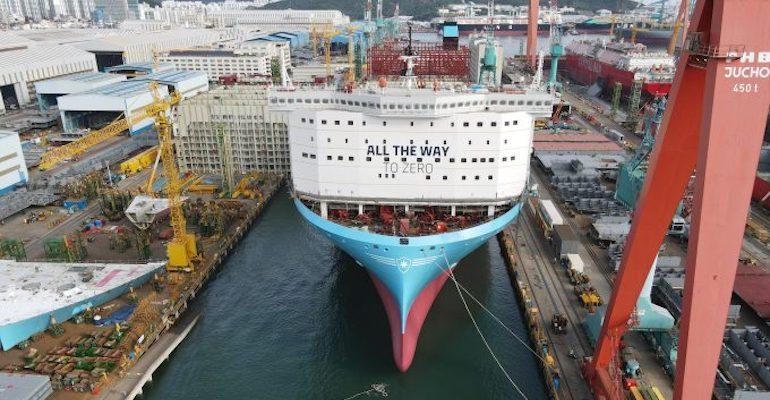The bunkering facility will be located at APM Terminal’s Minami-Honmoku container terminal.
This latest agreement aims to support Maersk’s growing fleet of 16,000-teu green methanol-powered container vessels, for which Maersk will equip 25 container vessels with dual-fuel engines capable of sailing on green methanol.
The agreement calls for examining operational feasibility and developing port facilities required for green methanol bunkering at the Port of Yokohama.
“Yokohama Port has proudly held the record for the highest number of foreign vessels calls in Japan for around 60 years, underscoring its critical role in maritime transportation where ‘fuel supply and bunkering for vessels’ holds significant importance,” said Takeharu Yamanaka, Mayor of Yokohama.
“Moving forward, the three parties involved will collaborate to promote the use of green methanol in accordance with the memorandum. Yokahama aims to spearhead the development of Japan’s green shipping corridors while also aiming to explore and invite more like-minded future partners to join the initiative,” Yamanaka added.
“We believe that the establishment of methanol as a ship fuel supply base in Japan is an important initiative that will contribute to international maritime transport and carbon neutrality of Japan,” commented Masashi Fujii, President of Mitsubishi Gas Chemical.
According to APM Terminals Minami-Honmoku container terminal is the only facility in Japan capable of handling vessels of over 14,000 teu with capabilities up to 24,000 teu and has an annual handling capacity of approximately 2.4 million teu.
Copyright © 2024. All rights reserved. Seatrade, a trading name of Informa Markets (UK) Limited.
Add Seatrade Maritime News to your Google News feed.  |

